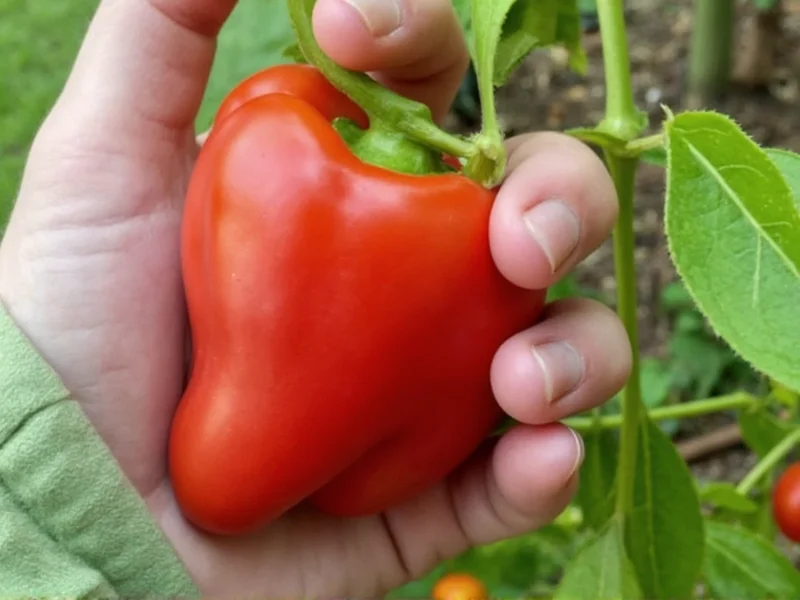Understanding the precise heat level of Hatch peppers is essential for home cooks and culinary professionals alike. These New Mexico-native chilies have gained widespread popularity across the United States, particularly during their seasonal harvest from late summer through early fall. Unlike many peppers that maintain consistent heat levels, Hatch varieties demonstrate remarkable variability that directly impacts how you should use them in recipes.
What Makes Hatch Peppers Unique
Grown primarily in the Hatch Valley region of New Mexico (which shares its name with the town of Hatch), these peppers benefit from a specific combination of soil composition, altitude, and climate that creates their distinctive flavor profile. While often compared to Anaheim peppers, Hatch varieties typically offer more complex flavor notes with earthy, slightly sweet characteristics alongside their moderate heat.
Understanding Hatch Pepper Heat Variations
The heat level in Hatch peppers isn't fixed—it depends on several key factors:
- Variety selection: Hatch peppers are specifically cultivated in mild, medium, and hot varieties
- Ripeness stage: Green (unripe) Hatches are generally milder than their red (fully ripe) counterparts
- Growing conditions: Soil quality, water availability, and temperature fluctuations during growth affect capsaicin production
- Individual pepper variation: Even within the same plant, heat levels can differ significantly
| Pepper Type | Scoville Heat Units (SHU) | Heat Level Comparison |
|---|---|---|
| Mild Hatch | 1,000-2,000 | Slightly hotter than poblano, much milder than jalapeño |
| Medium Hatch | 2,500-4,000 | Comparable to average jalapeño |
| Hot Hatch | 5,000-8,000 | Approaching serrano pepper heat levels |
| Red (Ripe) Hatch | 3,000-8,000 | Generally 20-50% hotter than green version |
Practical Implications for Cooking
When working with Hatch peppers, understanding their variable heat profile helps you make better culinary decisions. The mild variety works well in dishes where you want pepper flavor without significant heat—think creamy soups, stuffed peppers, or as a pizza topping. Medium Hatches provide that classic southwestern kick perfect for salsas, enchilada sauces, and roasted pepper sandwiches.
Chefs often recommend tasting a small piece of the pepper before incorporating it into a recipe, especially when working with unlabeled Hatch peppers. This simple step prevents unexpected heat levels from ruining your dish. Remember that removing seeds and white membranes (the placenta) can reduce heat by up to 80%, as these contain the highest concentration of capsaicin.
Seasonal Availability and Heat Consistency
Hatch peppers have a relatively short growing season (August-October), and their heat levels can vary throughout this period. Early season peppers tend to be milder as temperatures are cooler, while late-season Hatches often develop more heat as temperatures rise. This seasonal variation explains why you might experience different heat levels when purchasing Hatch peppers at different times during their harvest window.
When fresh Hatch peppers aren't in season, many cooks turn to frozen or roasted canned varieties. These preserved options generally maintain consistent heat levels, though the roasting process can slightly mellow the heat while enhancing the smoky flavor profile that makes Hatch peppers so distinctive.
Common Misconceptions About Hatch Pepper Heat
Several myths persist about Hatch pepper heat that deserve clarification. First, the blackened skin from roasting doesn't increase heat—it's actually a sign of caramelization that enhances flavor while potentially reducing perceived heat. Second, contrary to popular belief, larger Hatch peppers aren't necessarily milder; size relates more to water content than capsaicin concentration.
Perhaps the most widespread misconception is that all Hatch peppers are extremely hot. In reality, the majority of commercially available Hatch peppers fall in the mild to medium range. The "hot" designation applies only to specific cultivated varieties, not the entire Hatch category.
How to Handle Hatch Peppers Safely
When working with hotter varieties of Hatch peppers, proper handling techniques prevent discomfort. Always wear gloves when handling hot varieties, and never touch your face—especially eyes—after handling. If you experience burning sensations, dairy products like milk or yogurt provide immediate relief by binding to capsaicin molecules, while water merely spreads the oil.
For gardeners interested in growing their own Hatch peppers, remember that stress factors like inconsistent watering or nutrient deficiencies can cause otherwise mild varieties to develop unexpectedly high heat levels. Maintaining consistent growing conditions helps produce more predictable heat results.











 浙公网安备
33010002000092号
浙公网安备
33010002000092号 浙B2-20120091-4
浙B2-20120091-4